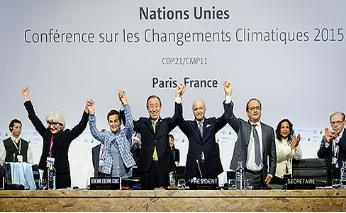
1.When was the global, legal pact most probably signed?
A On November 30, 2015.
B On December 4, 2015.
C On December 8, 2015.
D On December 12, 2015.
解析:选D。推理判断题。根据第一段The agreement came after twelve days of talks between the leaders at the 21st Conference in Paris, France.可知大会进行了12天,再根据第三段But the 21st Conference of Parties, or COP21, which began on November 30, 2015 in Paris又知大会始于2015年11月30日,由此可推断全球气候变化新协议应于2015年12月12日通过,故选D。
2.What are the countries required to do according to the agreement?
A Punish those who cause pollution.
B Invest more in fighting pollution.
C Provide a yearly report about their work.
D Hand in their yearly plan for their work.
解析:选B。细节理解题。根据第五段最后两句It urges countries to spend trillions of dollars on creating new energy sources. It also requires countries to raise at least $100 billion each year to help developing countries.可知新协议要求各国提高保护环境的资金投入,故选B。
3.What does the underlined word “pledge” in Paragraph 5 mean?
A Hesitate.
B Refuse.
C Promise.
D Fail.
解析:选C。词义猜测题。根据下文的It urges countries不难判断,各国被要求加入控制排放温室气体的保护环境的行为,既然参加了巴黎气候大会,可推断他们承诺控制温室气体的排放,故选C。
4.The pact is thought to be imperfect because it is _______.
A difficult to follow
B not detailed enough
C not attractive to all countries
D is based on just some opinions
解析:选B。推理判断题。根据第六段第一句However, critics of the pact say that it does not include specifics about how the plan will be enforced and how improvements will be measured.可知新协议的缺点在于规定不够具体,故选B。
5.What is each country required to do about their fighting pollution in order to be admitted to the Paris conference?
A Provide a work plan.
B Provide a written analysis.
C Give an oral explanation.
D Give a written assessment.
解析:选A。细节理解题。根据第四段第一句Before the conference, each nation was asked to create plans on how to reach the shared goal.可知与会国必须提供其环境保护的工作计划,故选A。